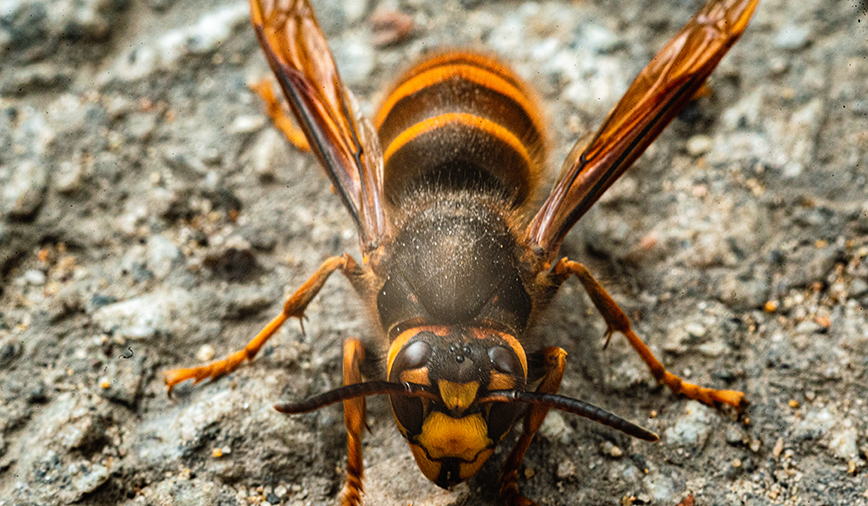What comes to mind when you think of a good neighbor? The folks next door? State Farm? Bald-faced hornets?
Okay, that last one may sound like a stretch. After all, aren’t hornets the critters people get “mad as?” And isn’t “stirring up a hornet’s nest” the last thing you want to do?
Really, though, bald-faced hornets aren’t all that bad. True, they have stingers, and they don’t hesitate to use them when defending their nests. (Who wouldn’t, when the lives of hundreds of young are at stake?) And because the stinger is smooth, not barbed like a bee’s, it can be used repeatedly to inject a venom reputed to be quite painful.
But I digress. Despite their reputation for being ornery, bald-faced hornets truly are good neighbors to have around. Their homes are neat and tidy; they’re industrious workers; and, best of all, their habit of preying on pest insects like flies and caterpillars helps make the neighborhood a better place for all of us.
Still, these insects suffer from a poor public image. To help them earn the respect they deserve, let’s take a look at a few facts. For one, bald-faced hornets aren’t hornets at all but rather are wasps in the family Vespidae. They’re black and ivory, instead of black and yellow, and can measure up to ¾-in. in length. They have a complex social structure that includes a queen, female workers and male drones (who, incidentally, don’t have stingers) and live in a large, gray, football-shaped paper dwelling that typically hangs from a tree branch 10 or more feet in the air.
That’s right, we’re talking about those guys. I’ve lost count, but I’d guess I’ve spoken to at least 10 people in the past few weeks who were concerned when the leaves fell off the trees and revealed—dum-da-dum-dum—The Nest.
Large and conspicuous today, the home base for your neighborhood bald-faced hornet colony started off as a few cells constructed by a young queen last spring. Over time the nest grew to become a stack of horizontal combs completely encased in layers of paper—wood pulp combined with starches in the saliva of the workers—that is remarkably windproof and waterproof.
As summer turned to fall, the colony shifted into the vespine equivalent of a hurry-up offense. The queen modified her routine of laying only fertilized eggs and added some unfertilized eggs to the mix to produce a number of drones, or males. She then visited several specially constructed, larger cells and deposited fertilized eggs in them; these larvae were fed more food (masticated insects-yum!) than the young in normal-sized cells and developed into jumbo offspring—next year’s queens. The future royalty then mated with the drones and vacated the premises, heading for fallen logs or other shelter in which to spend the winter.
With the next generation’s future secure, the current queen died; with the recent freezing temperatures, most of the rest of the colony has too.
The nests these insects worked so hard to create and maintain won’t be used again, at least not by bald-faced hornets. Wildlife in the know, though, like raccoons, will try their mightiest to climb out to these nests and feast on the nutritious, albeit frozen, morsels within.
Next time you’re out and about, scan the branches of nearby trees for large, gray football-shaped objects. When you see one you’ll know that, like a good neighbor, the bald-faced hornet was there.
Pam Otto is the manager of nature programs and interpretive services for the St. Charles Park District. She can be reached at potto@stcparks.org or 630-513-4346.

